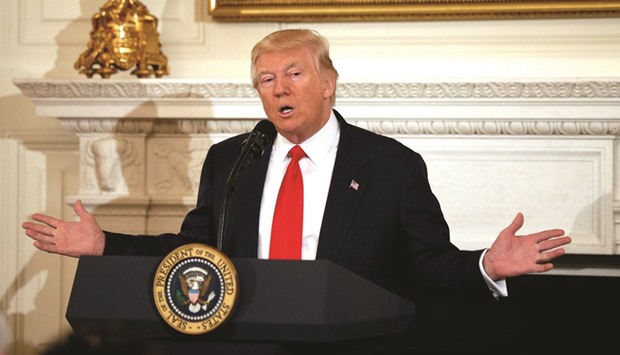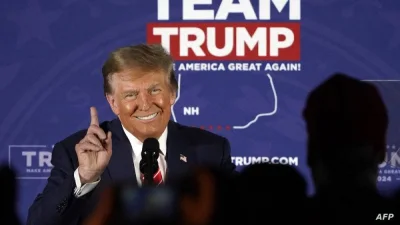President Donald Trump is seeking what he called a “historic” increase in military spending of more than 9%, a huge rise even as the United States has wound down major wars in Iraq and Afghanistan and remains the world’s strongest military power.
Trump will seek to boost Pentagon spending in the next fiscal year by $54bn in his first budget proposal and slash the same amount from non-defence spending, including a large reduction in foreign aid, a White House budget official said yesterday.
The president does not have the final say on federal spending.
His plan for the military is part of a budget proposal to Congress, which, while it is controlled by his fellow Republicans, will not necessarily follow his plans.
Budget negotiations with lawmakers can take months to play out.
Trump told state governors at the White House that his budget plan includes a “historic increase in defence spending to rebuild the depleted military of the United States of America”.
“This is a landmark event and message to the world in these dangerous times, of American strength, security and resolve. We must ensure that our courageous servicemen and women have the tools they need to deter war and when called upon to fight in our name, only do one thing: Win,” he said.
Officials familiar with Trump’s proposal said the defence increase would be financed partly by cuts to the State Department, the Environmental Protection Agency and other non-defence programmes.
“We’re going to do more with less and make the government lean and accountable to the people,” Trump said.
Such a military spending hike would be unusual given that the United States is not engaged in a major war, although its special forces and Air Force are active against Islamic State (IS) in Iraq and Syria.
An official familiar with the proposal said Trump’s request for the Pentagon included more money for shipbuilding, military aircraft and establishing “a more robust presence in key international waterways and choke points” such as the Strait of Hormuz and South China Sea.
That could put Washington at odds with Iran and China.
The United States already has the world’s most powerful fighting force and it spends far more than any other country on defence.
Spending in the most recent fiscal year was $584bn, according to the Congressional Budget Office, so Trump’s planned $54bn increase would be a rise of 9.2%.
The next fiscal year starts in October.
In a speech to conservative activists on Friday, Trump promised “one of the greatest military build-ups in American history”.
A second official said the State Department’s budget could be cut by as much as 30%, which would force a major restructuring of the department and elimination of programmes.
The US spends about $50bn annually on the State Department and foreign assistance.
More than 120 retired US generals and admirals urged Congress yesterday to fully fund US diplomacy and foreign aid, saying that “elevating and strengthening diplomacy and development alongside defence are critical to keeping America safe”.
Trump has previously said he would expand the Army to 540,000 active-duty troops from its current 480,000, increase the Marine Corps from 23 to 36 battalions – or as many as 10,000 more Marines – boost the Navy from 276 to 350 ships and submarines, and raise the number of Air Force tactical aircraft from 1,100 to 1,200.
But he has not said where he would place the extra hardware and forces or made clear what they will be used for.
The United States has been shutting some of its military bases in recent years.
Trump has also said he would bolster the development of missile defences and cyber capabilities.
Last week, he told Reuters that the United States has “fallen behind on nuclear weapon capacity”.
He pledged to ensure that, “we’re going to be at the top of the pack”.
Trump also said yesterday that he would talk about his plans for infrastructure spending in a speech to Congress today.
“We’re going to start spending on infrastructure big,” he said.
Treasury Secretary Steven Mnuchin, speaking on Fox News on Sunday, said Trump’s budget would not seek cuts in federal social programmes such as Social Security and Medicare.

Trump: We’re going to do more with less and make the government lean and accountable to the people.


